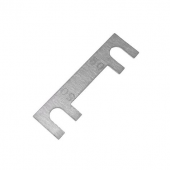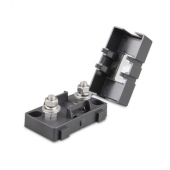iquibalamenpau
New Member
- Joined
- Apr 30, 2021
- Messages
- 5
Hi,
I have very little knowledge of electronics but these diagram has been very helpful to represent it in a simpler way.
I hope that somebody could give me a recommendation on my design, fuse rate and wire size. I’m open to any recommendations and adjustments.
Thanks to everyone
Components Used:
Doubts:
1- I am going to use the Inverter to power 2 laptops and a 50L fridge (which opens three times a day). Is it necessary to increase the 25mm2 cables and the 100A fuses?
2- In the MPPT Smart Solar manual, it indicates that it is optional to connect the ground (chassis), is it recommended?
3- Can I connect the negatives (-) of both batteries through the chassis ? Instead of two negative cables from the Orion DC-DC to each battery.
4- Do the negatives (-) have to be connected to the chassis in a lifepo4 system?
5- Should I fuse the positive (+) cable of the main battery to Orion tr?
Diagram in Imagur
Diagram attached in PDF
PS: i got the diagram from https://diysolarforum.com/threads/w...did-we-get-the-wire-fuse-ratings-right.20224/
I have very little knowledge of electronics but these diagram has been very helpful to represent it in a simpler way.
I hope that somebody could give me a recommendation on my design, fuse rate and wire size. I’m open to any recommendations and adjustments.
Thanks to everyone
| Wire Location | Max Length (meters) | Wire, mm2 | Fuse/Breaker Rating (Amp) |
| Solar Panels to MPPT | 5 | 10 - 16 ??? | 20 |
| MPPT to (+) Bus Bar | 0.5 | 6 | 40 |
| (+) Bus Bar to Second Battery | 0.5 | 25 | 100 |
| (+) Bus Bar to DC Fuse Box | 0.5 | 25 | 100 |
| (+) Bus Bar to Alternator | 0.5 | 25 | 100 |
| (+) Bus Bar to Orion DC-DC | 0.5 | 10 ? | 45 ? |
| Orion to main car Battery | 6.5 | 35 ? | 60 |
| (+) Bus Bar to Inverter | 0.5 | 35 | 150 |
| Inverter to loads 220 | 5 | 2.5 | - |
Components Used:
- 1 x 370 W, 24 v, Mono Solar Panels by Jinko ( Link )
- Smart Solar 100|30 MPPT by Victron ( link )
- Orion tr DC-DC 30A Isolated by Victron ( link )
- 4 x REPT 3.2 280 AH Lifepo4 Battery cells ( link )
- Smart BMS 4S cells 12V 120A (link)
- 300 A Shunt by Mictuning ( link + link shunt )
- 1000 W, 12V, Pure Sine Inverter ( link )
- Main switch 300A ( link )
- Auto midi Fuses (50A to 100A) (Link)
Doubts:
1- I am going to use the Inverter to power 2 laptops and a 50L fridge (which opens three times a day). Is it necessary to increase the 25mm2 cables and the 100A fuses?
2- In the MPPT Smart Solar manual, it indicates that it is optional to connect the ground (chassis), is it recommended?
3- Can I connect the negatives (-) of both batteries through the chassis ? Instead of two negative cables from the Orion DC-DC to each battery.
4- Do the negatives (-) have to be connected to the chassis in a lifepo4 system?
5- Should I fuse the positive (+) cable of the main battery to Orion tr?
Diagram in Imagur
Diagram attached in PDF
PS: i got the diagram from https://diysolarforum.com/threads/w...did-we-get-the-wire-fuse-ratings-right.20224/




